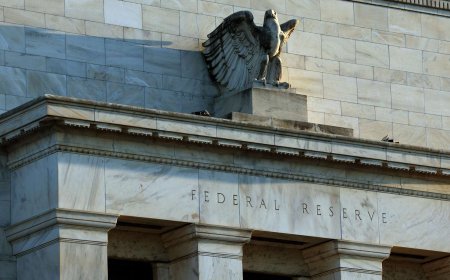Ripple And BCG Project $18.9 Trillion Tokenized Asset Market By 2033
The report highlighted that asset tokenization has the potential to significantly reduce costs for asset managers and issuers, which could drive wider adoption.

Key Points to Note:
-
Ripple and BCG project the tokenized asset market, including stablecoins, to reach $18.9 trillion by 2033.
-
The report identifies money markets, private credit, and carbon emissions tokenization as use cases that offer operational efficiencies.
-
The report also mentions unclear regulations, lack of standardization, and market fragmentation as barriers to broader adoption.
A joint report from Boston Consulting Group (BCG) and Ripple, released on Monday, suggests that the market for tokenized financial instruments, or real-world assets (RWAs), could grow to $18.9 trillion by 2033, as the technology nears a crucial turning point.
This would imply an average compound annual growth rate (CAGR) of 53%, based on the report's mid-point estimate between a more conservative scenario of $12 trillion in tokenized assets over the next eight years and a more optimistic projection of $23.4 trillion.

Tokenized asset market growth forecast (Ripple, BCG)
Tokenization involves using blockchain technology to record ownership and transfer assets like securities, commodities, and real estate. This sector is rapidly growing in the crypto space, with many traditional financial firms globally pursuing tokenization for greater efficiency, faster and cheaper settlements, and 24/7 transactions. JPMorgan's Kinexys platform has already processed over $1.5 trillion in tokenized transactions, with daily volumes exceeding $2 billion. BlackRock’s tokenized U.S. dollar money market fund (BUIDL), in collaboration with the tokenization firm Securitize, is approaching $2 billion in assets under management and is increasingly being integrated into decentralized finance (DeFi).
“The technology is ready, regulation is evolving, and foundational use cases are in the market,” said Martijn Siebrand, Digital Assets Program Manager at ABN AMRO, in the report.
The report highlighted tokenized government bonds, such as U.S. Treasuries, as an early success, enabling corporate treasurers to easily move idle cash into tokenized short-term government bonds from digital wallets without intermediaries, allowing for real-time liquidity management around the clock.
Private credit is also gaining attention, as it opens access to traditionally opaque and illiquid markets while offering investors clearer pricing and fractional ownership. Similarly, carbon markets are seen as a promising area where blockchain-based registries could improve transparency and traceability of emissions credits.
Key Challenges Remain
Despite the growth, the report identified five main barriers to wider adoption: fragmented infrastructure, limited interoperability across platforms, inconsistent regulatory progress, varying custody frameworks, and a lack of standardization for smart contracts. Currently, most tokenized assets settle independently, with off-chain cash transactions limiting efficiency. Additionally, tokenized asset markets face difficulties in unlocking secondary liquidity without standardized delivery-versus-payment (DvP) practices.
Regulatory clarity varies widely across regions. Switzerland, the EU, Singapore, and the United Arab Emirates have established comprehensive legal frameworks for tokenized securities and infrastructure, while major markets like India and China remain either restrictive or lack clear definitions. This uneven regulatory progress complicates cross-border operations, forcing companies to customize infrastructure for each market.
Despite these challenges, early adopters are rapidly expanding. The report outlines three phases of tokenization: the initial low-risk adoption of familiar instruments like bonds and funds; the expansion into more complex products such as private credit and real estate; and the full market transformation, including previously illiquid assets like infrastructure and private equity. Most firms are currently in the first or second phase, with scalability dependent on regulatory alignment and infrastructure development.
The report highlights that tokenization can lead to significant cost savings in processes like bond issuances, real estate fund tokenization, and collateral management, further fueling growth in the sector.

Savings potential for tokenization use cases (Ripple, BCG)
The report noted that cost is becoming less of a barrier for firms. Focused tokenization projects can now be launched for under $2 million, while comprehensive end-to-end integrations—covering issuance, custody, compliance, and trading—can cost up to $100 million for large institutions.
However, Jorgen Ouaknine, global head of innovation and digital assets at Euroclear, warned that without industry-wide coordinated efforts, the same silos and fragmentation that tokenization aims to eliminate could reemerge in digital form.
What's Your Reaction?
 Like
0
Like
0
 Dislike
0
Dislike
0
 Love
0
Love
0
 Funny
0
Funny
0
 Angry
0
Angry
0
 Sad
0
Sad
0
 Wow
0
Wow
0




































































